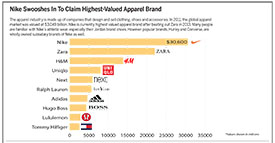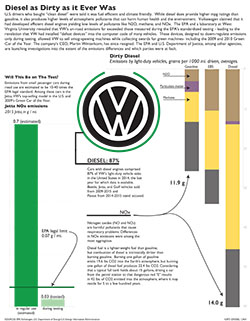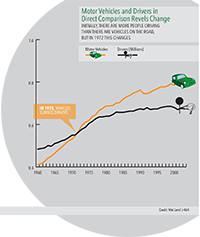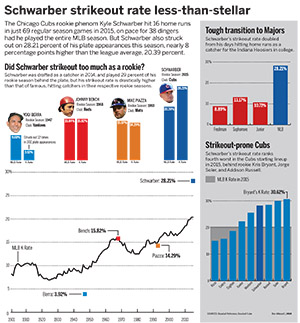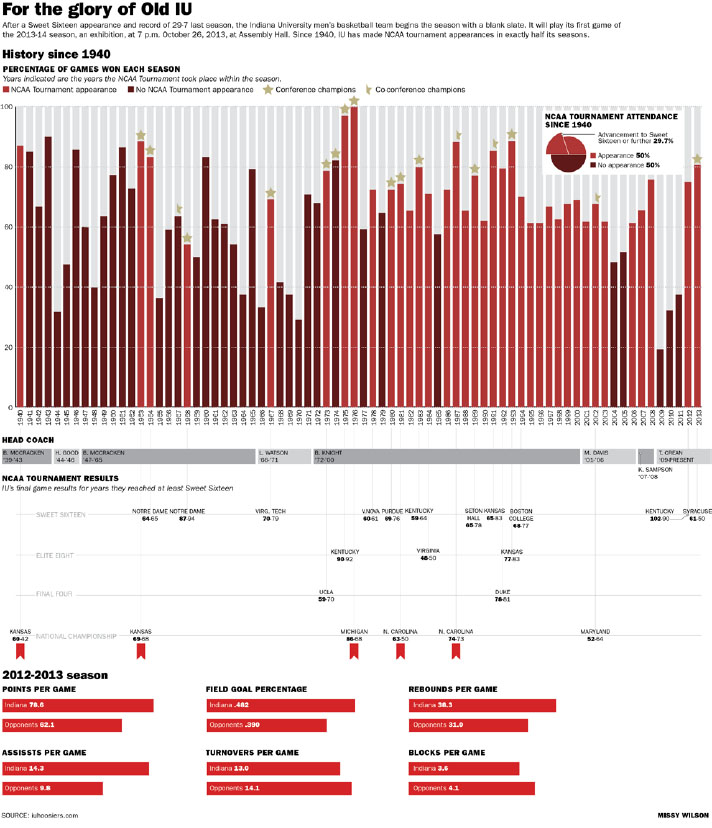This chart package gives an overview on Nike’s current apparel industry status. They have recently become the top fashion retailer in the world. I wanted to do a topic in fashion because I’m interested in that industry, specifically fashion public relations, for a career. My main chart is a horizontal bar graph showing the values of the top ten apparel retailers in the world. Because Nike is currently the highest valued, I looked into the company further. I also decided to add a line graph comparing Nike’s revenue over a span of 10 years with the revenue percent change. Lastly, I added in two pie charts. One showed how much of Nike’s brand revenue came from each of their major locations. The final pie chart breaks down where most of Nike’s factory employees are stationed.
While researching this topic I was able to read about the top 10 fashion retailers in the world. I was surprised by some of the brands on the list. I also was able to look deeper into Nikes growth and current status, which I may have never looked into if it weren’t for this project. I also learned that Nike makes it’s quarterly fiscal reports available on their website, which was very helpful in my research. Not only did I broaden my knowledge on Nike, but on using Illustrator as well. I had to apply what we had been learning in class to my own work, and it was exciting to see the results.
All in all, I think the package turned out okay. I had never used Illustrator before this class, so for my first project I thought I did well. I didn’t realize how time consuming all of the research and planning would take. I also spent a lot of time fixing tiny details and changing my mind on layouts and colors. I found it difficult to organize the charts in a cohesive way.

